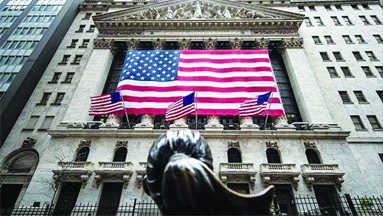
The equity market has remained volatile, with both the S&P 500 and the tech-heavy Nasdaq index closing 1% higher on August 6, rebounding from a 3% drop in the S&P 500.
Meanwhile, the VIX implied volatility index fell to around 28 after spiking above 60 intraday on August 5. In light of these developments, market expectations for the pace of Federal Reserve rate cuts have shifted significantly in recent weeks. Fed funds futures markets are now pricing in 136 basis points of cuts in 2024 and a further 97 basis points in 2025.
“With rates at 5.25-5.5%, the Fed has the capacity to bolster the economy and markets and recent data should have improved the Fed’s confidence that inflation is on a sustainable path back to the 2% target,” UBS strategists said in a note.
Analysts now anticipate that the Fed will make a 50-basis-point cut at its September meeting, followed by an additional 50 basis points of easing throughout the rest of 2024, with further cuts expected in 2025.
Recent movements in equities, bonds, and currencies have been partly attributed to the unwinding of widely held positions, including long positions in mega-cap US tech stocks and short positions in the Japanese yen.
While the full impact of position squaring on recent market volatility is difficult to gauge, sentiment has become more cautious regarding risky assets, UBS notes.
Clear indications of this shifting investor mindset are evident in the options market.
The put-call skew has risen since last week, showing that investors are now more willing to pay for downside protection than for upside optionality. Moreover, the S&P 500 implied volatility term structure has inverted, with 3-month volatility exceeding 1-year volatility for the first time since the banking crisis in March 2023.




Be the first to comment